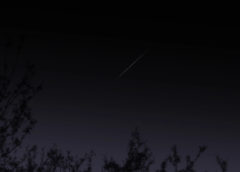While most meteor showers are usually named after the constellations that is their radiant point, not the Quadrantids… The radiant point for this shower is the constellation Boötes.
The shower is named after the now obsolete constellation, Quadrans Muralis, which was used in 1825, back when the Quadrantids were first reported.
Another unique feature of the Quadrantids is that its parent body is an asteroid, 2003 EH. One of two showers that has a parent body that is not a comet.
On January 3-4, the Quadrantid meteor shower reaches its maximum activity. Although the shower can be intense at times, it is only for a short time compared to other showers.
The peak should occur around the early morning hours. Look to the northern sky, near Boötes.
Conditions are great for viewing because there is a new Moon. But for the best viewing if you live in an area of severe light pollution is to go to a location that is optimal for night sky viewing.

